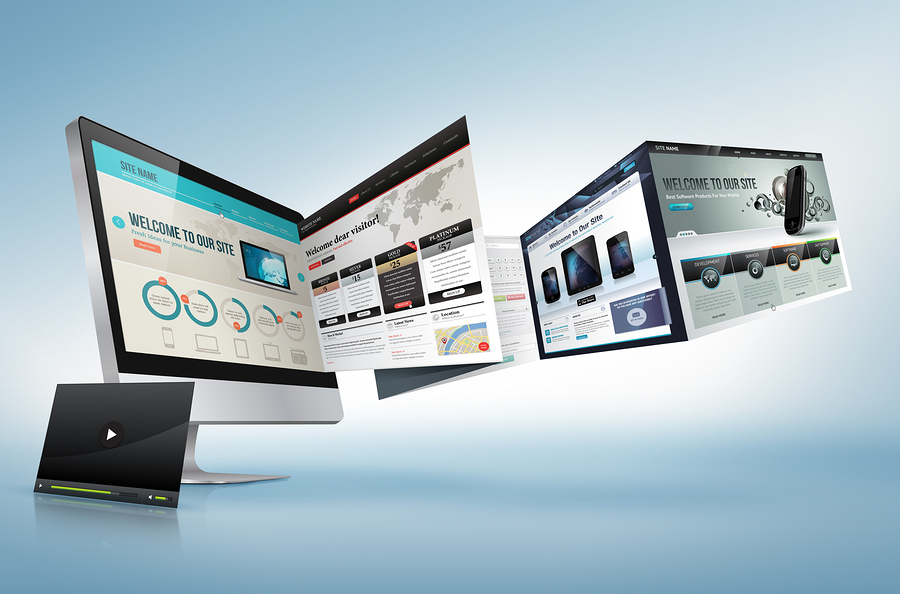The Ultimate Guide to Website Design: Tips for Creating Stunning Websites
Wiki Article
Modern Website Design That Captures Attention and Transforms
In a progressively digital landscape, modern internet site style has become a pivotal factor in capturing user focus and driving conversions. By strategically utilizing visual pecking order, receptive designs, and involving interactive components, developers can produce experiences that not just attract site visitors but additionally assist in significant interactions. Additionally, efficient call-to-action strategies play a crucial role in assisting users toward wanted results. As we discover these crucial elements, it ends up being clear that comprehending their interplay can substantially impact a web site's efficiency and individual satisfaction. What are the crucial elements that absolutely make a difference?Value of Visual Power Structure
Aesthetic pecking order is a vital element in web site design, as it overviews customers' interest and boosts their total experience. By tactically organizing web content, developers can guide users to one of the most vital details initially, consequently raising engagement and improving functionality. Reliable visual pecking order employs numerous strategies, consisting of dimension, spacing, color, and contrast. Larger elements naturally attract the eye, while contrasting colors can highlight vital messages, making them stand out amongst even more subdued parts.Integrating a rational flow in material setup is crucial; for instance, positioning one of the most critical info on top of a web page fosters immediate acknowledgment. Moreover, constant use typography, such as differing font sizes and styles, assists develop a clear material framework. This company not only help in navigating however likewise constructs depend on, as individuals really feel a lot more comfortable when they can easily discover what they are searching for.
Inevitably, a well-executed visual hierarchy not only enhances visual appeal but also dramatically impacts user habits. By focusing on vital components and making sure a smooth experience, designers can efficiently convert visitors into customers, reinforcing the significance of this foundational layout concept in modern website development.
Responsive Design for All Devices
Producing a seamless experience throughout various devices is vital in today's digital landscape, where individuals access web sites from tablets, desktops, and smart devices alike. Responsive design is a vital approach that makes sure websites adapt fluidly to different display orientations, sizes, and resolutions. By using flexible grids, photos, and CSS media inquiries, developers can create designs that preserve aesthetic honesty and capability, no matter the tool being made use of.The importance of responsive style prolongs past appearances; it directly influences user involvement and conversion rates. A web site that functions well on all gadgets encourages longer brows through and decreases bounce prices, as users are most likely to engage with material that is easy to navigate. Additionally, search engines, specifically Google, focus on mobile-friendly websites in their positions, making responsive style an essential component of search engine optimization (SEARCH ENGINE OPTIMIZATION)
Incorporating receptive design not only boosts customer experience yet additionally improves the growth process. By producing a solitary site that functions across tools, organizations can save time and resources compared to establishing different mobile and desktop versions. Eventually, responsive style is a fundamental technique for modern site style, making sure ease of access and satisfaction for all users, no matter their gadget.
Involving Interactive Aspects
While a receptive design lays the groundwork for a practical More Bonuses web site, integrating interesting interactive components is crucial for catching customer attention and cultivating deeper links. Website Design. Interactive components, such as animations, quizzes, and clickable infographics, develop a more dynamic individual experience, motivating visitors to invest more time on the websiteIntegrating interactive features can also lead customers through complicated information, making it much easier to digest web content. Interactive sliders can highlight product variants, while ingrained videos can supply demos or testimonials that reverberate more than fixed images or text. In addition, gamification strategies, like benefits for finishing jobs or engaging with content, can boost user inspiration and retention.
Effective use of interactive aspects not just enhances the customer experience however can likewise lead to higher conversion rates. It is important to stabilize interactivity with efficiency; overly complex functions might prevent site rate, negatively affecting user contentment.
Structured Navigating Practices
Efficient navigating is a foundation of any successful site, as it straight affects individual experience and content accessibility. Structured navigation practices make sure that users can conveniently situate details, boosting their communication with the website. A well-structured navigation food selection must be basic and user-friendly, normally including a restricted number of main classifications to stay clear of overwhelming site visitors.To accomplish streamlined navigating, developers should focus on a hierarchical structure that rationally organizes content. Applying breadcrumb trails can offer users with context concerning their existing area within the site, enabling smooth backtracking. Additionally, making use of drop-down food selections can efficiently save room while still offering accessibility to subcategories.
Receptive layout is important, as navigating must be useful throughout all tools (Website Design). Mobile individuals, specifically, gain from touch-friendly menus and retractable sections that maintain functionality without endangering appearances

Reliable Call-to-Action Methods
A well-crafted call-to-action (CTA) is necessary for leading customers toward wanted results on a web site, as it encourages them to engage with content or purchase. To maximize their performance, CTAs must be clear, compelling, and strategically positioned throughout the website.First, utilize action-oriented language that interacts necessity or worth, such as "Start," "Sign up with Now," or "Case Your Discount." This language not only motivates individuals but additionally sets clear assumptions concerning the following hop over to these guys steps.
Second, think about design components; CTAs should stand out visually via contrasting shades, sufficient whitespace, and famous positioning. A switch that is very easy to see and click increases the probability of customer communication.
Furthermore, individualizing CTAs based on individual behavior or demographics can considerably boost involvement. Customized messages resonate extra with individuals, driving higher conversion rates.

Conclusion
Finally, contemporary site design highlights the assimilation of visual hierarchy, receptive designs, involving interactive elements, structured navigating, and effective call-to-action methods. These parts collectively boost individual experience, making sure that site visitors continue to be engaged and encouraged to explore material further. By focusing on these style concepts, services can significantly improve user retention and conversion rates, eventually causing higher success in the electronic landscape. The constant advancement of internet design highlights its essential role in reliable on-line interaction and advertising and marketing.In a significantly electronic landscape, modern web site style has emerged as a pivotal variable in catching user focus and driving conversions.Aesthetic pecking order is a vital aspect in website style, as it guides customers' interest and enhances their general experience.The significance of receptive style extends past looks; it directly influences individual engagement and conversion prices.Including responsive design not just enhances user experience yet additionally enhances the development process. Ultimately, receptive layout is a basic approach for modern-day internet site style, ensuring ease of access and contentment for all customers, no matter of their tool.
Report this wiki page